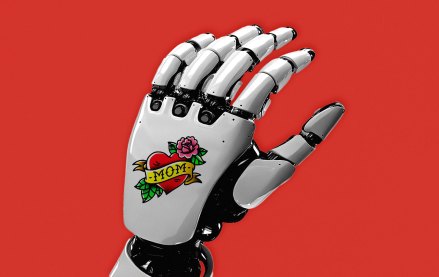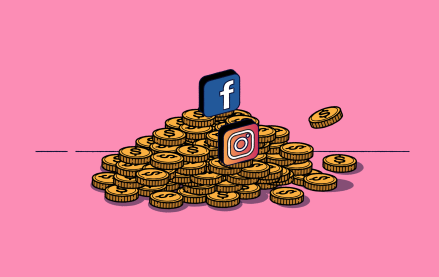Connect with execs from The New York Times, TIME, Dotdash Meredith and many more
Marketing Briefing: The outlook for Q2 is mixed, but marketers’ hopes grow for a better 2nd half

This Marketing Briefing covers the latest in marketing for Digiday+ members and is distributed over email every Tuesday at 10 a.m. ET. More from the series →
If you ask marketers and agency executives what the second quarter will look like, you’ll hear that it’s a bit of a mixed bag.
Marketers are spending, and there are signals that spending could pick up in the second half of the year with more new business pitches happening now, according to agency execs. But there’s still a “cautious optimism,” as one agency exec put it when asked to sum up marketers’ current mood. At the same time, spending is down compared to the second quarter of last year — agency execs say that it’s down roughly 10%, a smaller percentage than many had expected earlier in the year — and marketers are holding onto dollars longer and seeking more flexibility rather than longer-term commitments.
“Everyone is hoping the spring is really the spring,” said Brandon Rhoten, CMO of visitation data platform GroundTruth. “There are signs that it might be a soft landing. People are hoping for spring, they’re hoping we can get back to business and not worry so much about inflation or a recession. There’s more hope than a month ago, certainly.”
That hope is tentative, per Rhoten, who said marketers are hedging their bets and spending on more performance marketing rather than brand building efforts. While marketers are cautiously optimistic for a better second quarter than they anticipated a month ago, the focus continues to be on flexibility, as marketers are hoping for the best but making sure their plans won’t set them up for the worst.
Marketers’ current focus is on short-term planning, spending closer to campaign launches rather than inking long term deals, explained Stacey Stewart, U.S. Chief Marketplace Officer at UM, who added that “flexibility continues to be top of mind.”
“Everyone’s primary concern is not in the spending itself but in the unknown,” said Stewart. “Everyone wants to hold onto their dollars until they’re confident that they’re not going to need to return those dollars to someone’s bottomline.”
Even as some marketers are staying cautious, others have a “keep calm and carry on” mentality and are continuing to spend and accepting lower profits for higher revenues, according to Jason Harris, CEO of Mekanism.
“More brands are recognizing that by not spending and competitors spending they could gain share of voice when economy picks back up,” said Harris. “The playbook of stopping spending [during a downturn has been] debunked. Smarter brands will take less profit to be in a better position.”
Harris noted that while there’s a focus on flexibility with ad spending, that flexibility push also seems to be trickling into new business pitching.
“The new thing we’re seeing is that clients want to do a project first and then if it goes well then it’s an [agency-of-record],” said Harris. “It used to be an AOR or project. Now we’re seeing this crawl before you walk situation, let’s get rid of AOR and do the pitch for the project. If we like who wins then it’ll convert to AOR.”
Even with this shift in the request-for-proposal process, the fact that new business pitching is happening has Harris hopeful that the second quarter and second half of the year will be better than expected.
“Pitch activity tells me clients are planning the back half of the year to be busy,” said Harris. “I think this year will turn into a good year.”
3 Questions with Karrie Sanderson, CMO at online survey platform Typeform
You said you believe 2023 will be the year we see more B2B brands replicate branding tactics that have worked well for B2C brands. Why is that?
Companies have to be really mindful, whether it’s an employee or using a tool. What experience are they having? They’re humans and they are a customer. B2B brands, they’re starting to learn and understand that that experience that you give to the human on the end, whether they’re the person who wants to use the software or it’s the customer experience that they ended up having in the end through a Typeform, or whatever software they’re using, is very important. It’s how you show your customers or employees that you invite them to give you feedback. Customers these days expect the companies that they interact with to be open to and take their feedback.
Why does this shift matter and why is it happening?
Consumer behavior is spilling over into the workplace. There’s been a trend that employees and people feel like they have a right to have a voice of what they want, how they work. It’s this blurring of lines. In the business world, where the employees have a, in a good way, a bit more voice about how they work and how they want to work and what makes their job easier, and their ideas.
What does that look like for Typeform’s marketing strategy?
For us, how it shows up in our marketing is we are explicitly calling out this trend, and telling people how you show up matters, because there is so much more digital online interaction that you have to be open and not afraid to get that feedback from your customers, [and] think about it to incorporate it. — Kimeko McCoy
By the numbers
Marketers are seemingly prioritizing customer retention, both in terms of efforts and dollars, this year, as shoppers have more choices. According to new research from customer engagement platform company Braze, there has been a 36% increase in the percentage of companies investing the bulk of their marketing dollars toward customer retention strategies. Find a breakdown from the report below:
- Despite economic uncertainty, 90% of surveyed brands will be increasing their marketing budget in the next 12 months.
- 45% of brands spent more than half of their marketing budget on retention last year.
- 80% of companies say that they are collecting too much data, resulting in information that they can’t use effectively. — Kimeko McCoy
Quote of the week
“I’ve definitely felt a lot of pressure from myself to be more active on social media. I am sure that if I posted more, and if I became viral, that that would boost company sales … but ultimately during the day, I’m like, ‘This is just my bandwidth as a founder.'”
— Sahra Nguyen, founder of Nguyen Coffee Supply, on the how being a founder and an influencer can be difficult to navigate, in our sister publication Modern Retail’s story on the founder-influencer phenomenon.
What we’ve covered
- Quarterly ad spending recap: Green shoots of ad spending growth will take time to bloom
- How Supreme Court cases related to Google, Twitter could shape the future of advertising
- When it comes to the talent working on TikTok, more agencies are eying personal profiles
More in Marketing

Generative AI sparks brand safety concerns marketers know all too well
Despite concerns around brand misuse and IP, most marketers are sticking to traditional strategies.

‘Production is a big topic right now’: With AI moving beyond media, Publicis turns toward creative
The holdco is positioning AI as core infrastructure for ad production not just media buys.

Instagram offers a new guide to advertisers to convince them to try out its creator marketplace
The 26-page document aims to make the whole process quick and painless.








